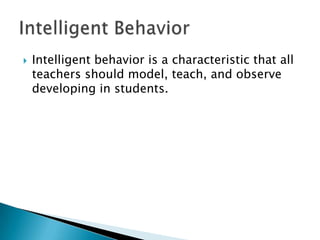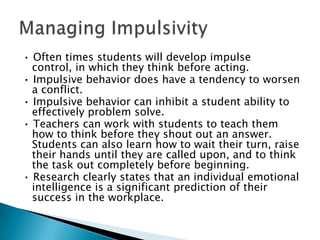The document discusses characteristics of intelligent behavior that teachers should model, teach, and observe in students. It provides examples of these characteristics, such as problem recognition, problem solving, project-based learning, using humor, empathizing with others, and continuous learning. It also provides suggestions for how teachers can support these characteristics in their classrooms, including incorporating projects, think tanks, encouraging feedback, and embracing new ideas.














